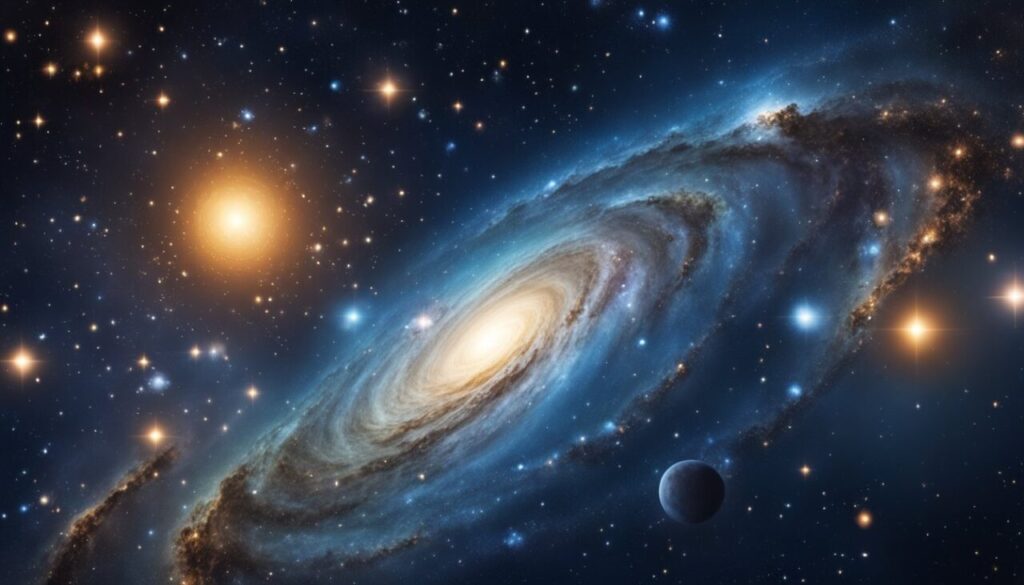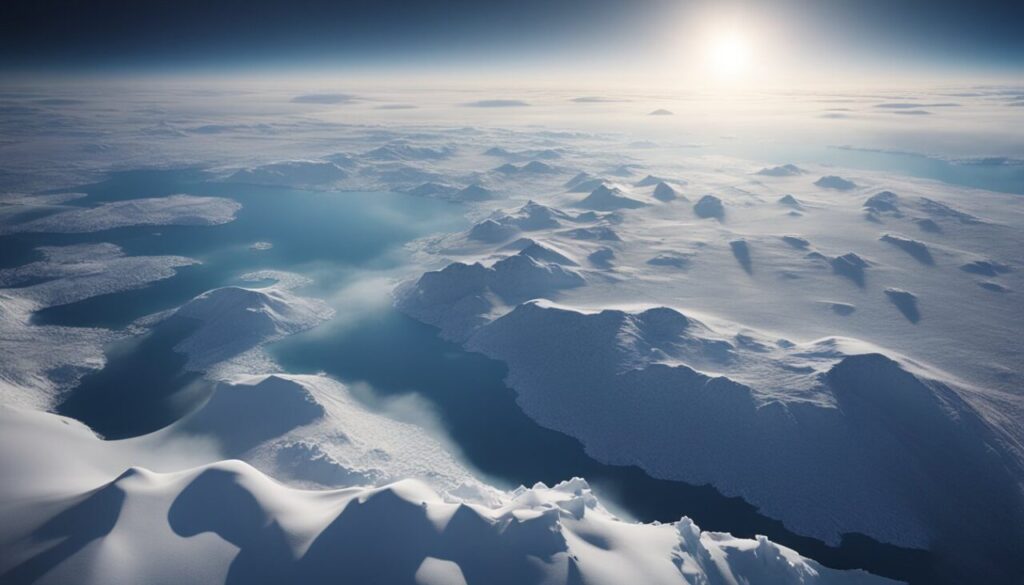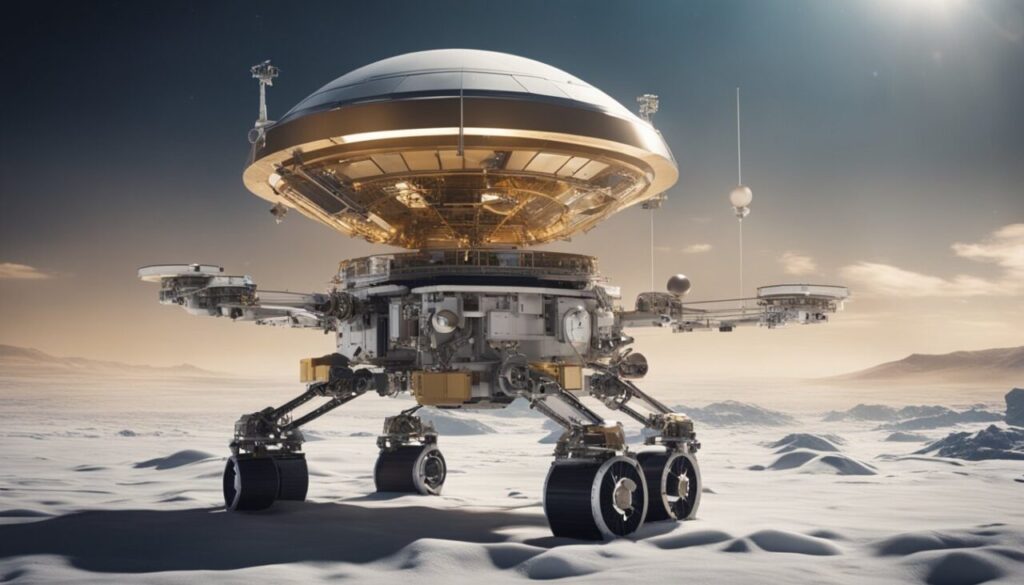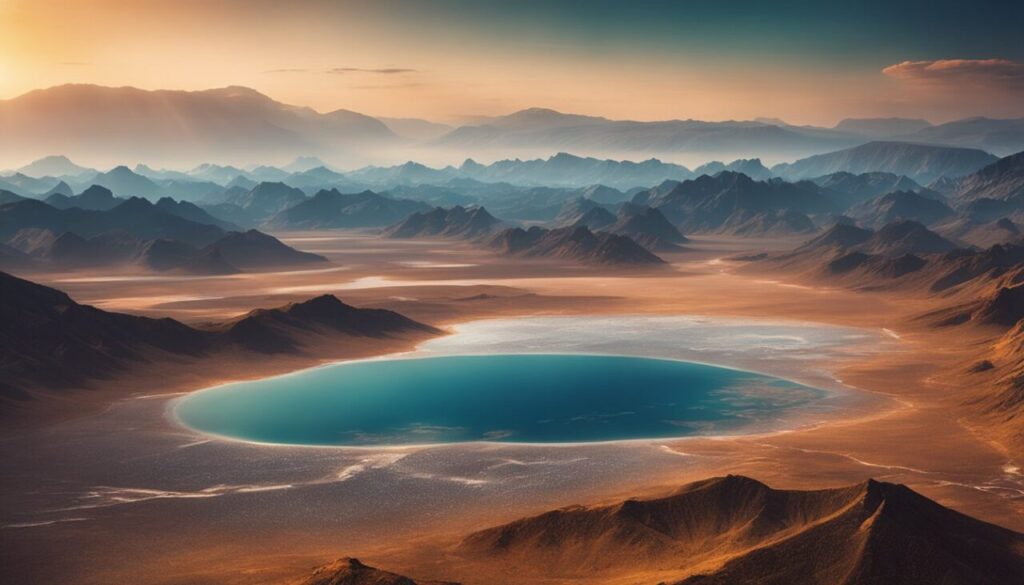
We humans are always wondering about the possibility of life beyond Earth. And while Mars has been the primary focus of exploration, other celestial bodies in our solar system have also sparked the interest of researchers.
One such body is Titan, the largest moon of Saturn. With its thick atmosphere and liquid methane seas, Titan has been identified as a potential location for some kind of life.
Despite its ultra-cold temperatures and lack of sunlight, Titan has some similarities to Earth.
It has a thick atmosphere, which protects its surface from harmful radiation, and its liquid methane and ethane lakes and seas could potentially provide a habitat for life.
Additionally, recent studies have suggested that Titan’s subsurface ocean may contain the necessary ingredients for life, including organic compounds and a source of energy.
Interesting fact: Titan is the only moon in our solar system with a dense atmosphere, and its atmosphere is thicker than Earth's. It is primarily composed of nitrogen, with small amounts of methane and other gases.
Titan’s Environment

Atmospheric Composition
Titan’s atmosphere is mostly composed of nitrogen, with small amounts of methane and other gases. The thick atmosphere creates a greenhouse effect, trapping heat and creating a kind of warmer surface temperature despite being far from the sun. The atmosphere also contains organic molecules, which are the building blocks of life.
Surface and Geology
Titan’s surface is covered in a thick layer of organic compounds, forming a crust over a subsurface ocean of liquid water and ammonia. The surface is marked by impact craters, mountains, and vast plains. The Huygens probe, which landed on Titan in 2005, revealed a landscape that resembles Earth, with rivers, lakes, and seas.
Interesting fact: Titan is the only other place in the solar system besides Earth with stable bodies of liquid on its surface.
Cryovolcanism and Hydrocarbon Lakes
Cryovolcanism, or cold volcanism, is a process where water or other volatile substances erupt from a planetary body. Titan has been observed to have cryovolcanoes, which release methane and other gases. The liquid methane and ethane on Titan’s surface also form lakes and seas, which are believed to be filled by rainfall and cryovolcanic activity.
Interesting fact: The largest hydrocarbon lake on Titan, called Kraken Mare, is larger than the Caspian Sea on Earth.
What Would Life on Titan Look Like?

Titan, the largest moon of Saturn, is one of the most intriguing places in our solar system. With its thick atmosphere, rivers, lakes, and even seas of liquid methane and ethane, scientists have long speculated about the possibility of life on this distant world.
But what would life on Titan look like?
Firstly, any life on Titan would have to be adapted to the extreme cold. Temperatures on the moon’s surface average around -290 degrees Fahrenheit, making it one of the coldest places in our solar system.
Life forms would need to have some kind of protective covering to insulate themselves from the cold.
Secondly, life on Titan would have to survive in an environment with very little sunlight.
The moon is so far from the Sun that it receives only about 1% of the amount of sunlight that Earth gets. Any life forms on Titan would need to find alternative sources of energy, such as chemical reactions.
Finally, any life on Titan would have to be able to survive in an environment with a very different chemistry than Earth’s. The lakes and seas on Titan are made up of liquid methane and ethane, rather than water. Any life that evolved on Titan would have to be able to use these substances as a solvent instead of water.
Interesting fact: Scientists have discovered that some Earth bacteria can survive in conditions similar to those found on Titan, leading to speculation that life on Titan may be possible.
Where to Search for Signs of Life on Titan

In order to search for signs of life on Titan, researchers are focusing on several key areas.
Lakes and Seas
One of the most promising places to search for life on Titan is in its lakes and seas. These bodies of liquid methane and ethane could provide a habitat for organisms adapted to these extreme conditions.
Scientists are analyzing data from the Cassini spacecraft, which detected several large lakes and seas near Titan’s poles.
Hydrocarbon Clouds
Titan’s atmosphere contains a variety of organic compounds, including methane and ethane. These compounds can form clouds, which could provide a source of energy for potential life forms.
Researchers are studying these clouds in order to better understand the chemical processes taking place in Titan’s atmosphere.
Surface Features
Titan’s surface is covered in a variety of features, including mountains, dunes, and river valleys. Some of these features may have been formed by liquid methane or ethane, which could be a sign of ongoing geological activity.
Researchers are analyzing images of Titan’s surface in order to identify areas that could be of interest for future exploration.
In conclusion, while the search for life on Titan is still in its early stages, researchers are focusing on several key areas in order to identify potential habitats. By studying the moon’s lakes and seas, hydrocarbon clouds, and surface features, scientists hope to gain a better understanding of this unique world and its potential for hosting life.
Search Missions for Life

Past Missions
Several missions have been sent to explore Saturn’s largest moon, Titan, in the search for potential signs of life.
The Cassini-Huygens mission, launched in 1997, was the first to conduct an in-depth study of Titan. The Huygens probe successfully landed on the moon’s surface in 2005, providing valuable data about its atmosphere and surface.
However, no direct evidence of life was found during the mission.
Interesting fact: The Huygens probe transmitted data for about 90 minutes after landing on Titan's surface.
Current Research
Scientists continue to study data from past missions and conduct new research to search for signs of life on Titan. One area of focus is the moon’s subsurface ocean, which is believed to exist beneath its icy crust. The ocean may contain the necessary ingredients for life, such as liquid water and organic molecules.
Interesting fact: Scientists estimate that the subsurface ocean on Titan may contain more than three times the amount of water found on Earth.
Future Exploration Plans
There are several proposed missions to further explore Titan and search for signs of life. The Dragonfly mission, set to launch in 2026, will send a drone-like spacecraft to explore Titan’s surface and search for signs of life. The mission will focus on areas of the moon that may contain liquid water, such as its vast dune fields and impact craters.
Life’s Possibility Factors

Organic Molecules
One of the key factors in determining the possibility of life on Titan is the presence of organic molecules. Scientists have found that Titan’s atmosphere is rich in complex organic compounds, including methane and ethane.
These compounds are thought to be the building blocks of life, and their presence on Titan suggests that the moon could potentially support life.
Interesting fact: In 2015, NASA's Cassini spacecraft detected the presence of a molecule called vinyl cyanide in Titan's atmosphere. This molecule is thought to be capable of forming cell membranes, which are essential for life.
Energy Sources
Another important factor in the search for life on Titan is the availability of energy sources. Without a source of energy, life cannot survive. One potential energy source on Titan is sunlight, but the moon’s thick atmosphere and distance from the sun make this unlikely. Instead, scientists believe that life on Titan could be powered by chemical reactions, such as those that occur between methane and oxygen.
Interesting fact: In 2018, researchers from Cornell University proposed a new theory that suggests that life on Titan could be powered by the moon's internal heat. This heat is generated by the gravitational forces of Saturn and other moons, and could potentially create hydrothermal vents on the ocean floor.
Liquid Water and Ammonia Mixtures
Finally, the presence of liquid water and ammonia mixtures is another important factor in determining the possibility of life on Titan. While Titan’s surface is too cold for liquid water, scientists believe that there could be an ocean of liquid water and ammonia beneath the moon’s icy crust. This ocean could potentially provide a suitable environment for life.
Challenges to Life on Titan

Extreme Cold
One of the biggest challenges to life on Titan is the extreme cold. With an average temperature of -290 degrees Fahrenheit, Titan is one of the coldest moons in our solar system.
This temperature is so cold that water on Titan’s surface is frozen solid, making it difficult for any life as we know it to survive. However, some scientists believe that there may be life forms that have adapted to survive in these extreme conditions.
Interesting fact: The temperature on Titan is so cold that methane, which is usually a gas on Earth, is a liquid on Titan.
Radiation Levels
Another challenge to life on Titan is the high levels of radiation. Titan is constantly bombarded by radiation from space, which can damage cells and DNA.
This radiation comes from the sun and from cosmic rays, which are high-energy particles that travel through space.
While some organisms on Earth are able to survive in high levels of radiation, it is unclear whether any life on Titan could do so.
Lack of Oxygen
Finally, the lack of oxygen on Titan presents another challenge to life. Oxygen is essential for most life on Earth, but there is very little of it in Titan’s atmosphere. Instead, Titan’s atmosphere is mostly made up of nitrogen and methane. This means that any life on Titan would need to find a way to survive without oxygen.
Scientific Methods

Spectroscopy
One of the primary methods used to study Titan’s atmosphere is spectroscopy. Scientists use this technique to analyze the light that passes through Titan’s atmosphere and identify the chemical composition of the gases present.
By studying the absorption and emission of different wavelengths of light, researchers can determine the presence of various molecules, such as methane and nitrogen.
Landers and Probes
Several landers and probes have been sent to Titan to study its surface and atmosphere. The most notable of these missions is the Cassini-Huygens mission, which arrived at Saturn in 2004 and released the Huygens probe to land on Titan’s surface in 2005.
The probe provided valuable data on the composition of Titan’s atmosphere and surface, including the discovery of lakes and seas of liquid methane and ethane.
Sample Return Missions
While landers and probes provide valuable data, they are limited in their ability to analyze samples and conduct more detailed experiments.
As such, there have been proposals for sample return missions to Titan. These missions would involve collecting samples of Titan’s surface or atmosphere and returning them to Earth for analysis.
Overall, these scientific methods have allowed researchers to gain a better understanding of Titan’s atmosphere and surface, but there is still much to learn about the potential for life on this intriguing moon.
Conclusion

In conclusion, while there is evidence to suggest that Titan, the largest moon of Saturn, may have the potential to support life, there is currently no conclusive evidence to support the existence of life in this distant world.
Despite the presence of organic molecules and the possibility of subsurface oceans, the extreme cold temperatures, lack of sunlight, and toxic atmosphere make it an unlikely candidate for life as we know it.
However, with ongoing research and technological advancements, scientists may one day uncover new evidence that could change our understanding of the potential for life on Titan.
Anyhow, we’ll find out everything about potential life on Titan in the upcoming decades.
It’s possible that we may discover some form of microbial life, but it’s highly unlikely that we’ll find any intelligent life there.
At least not yet.
Perhaps Titan is in the phase as the Earth was 3.7 billions years ago when the first microbial life appeared on our planet.




















